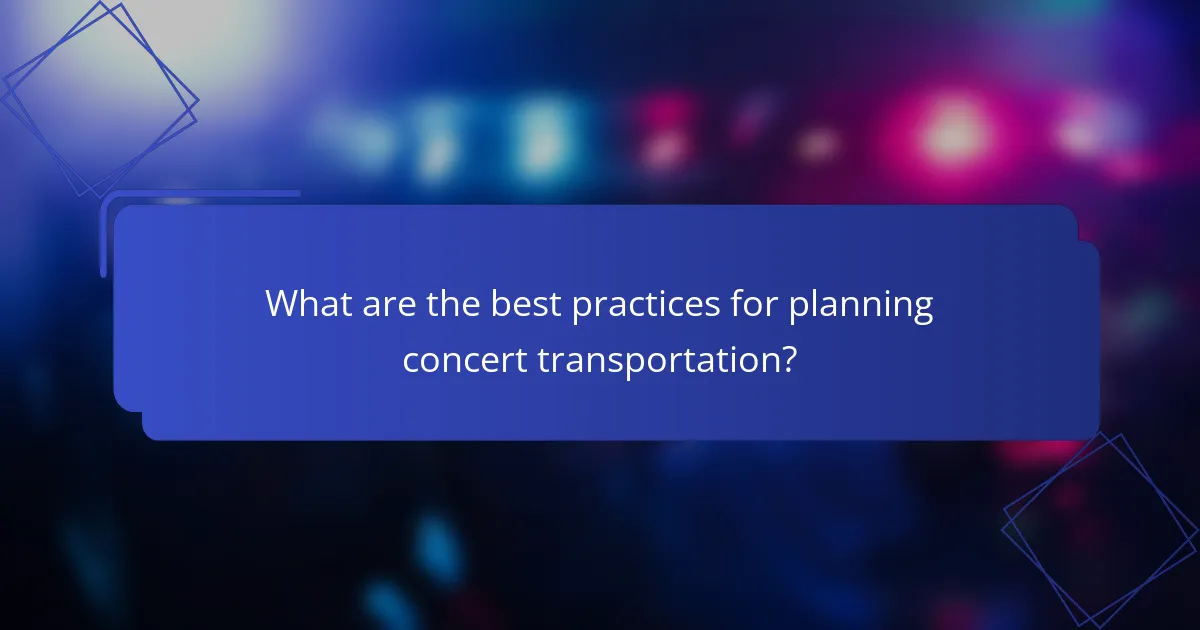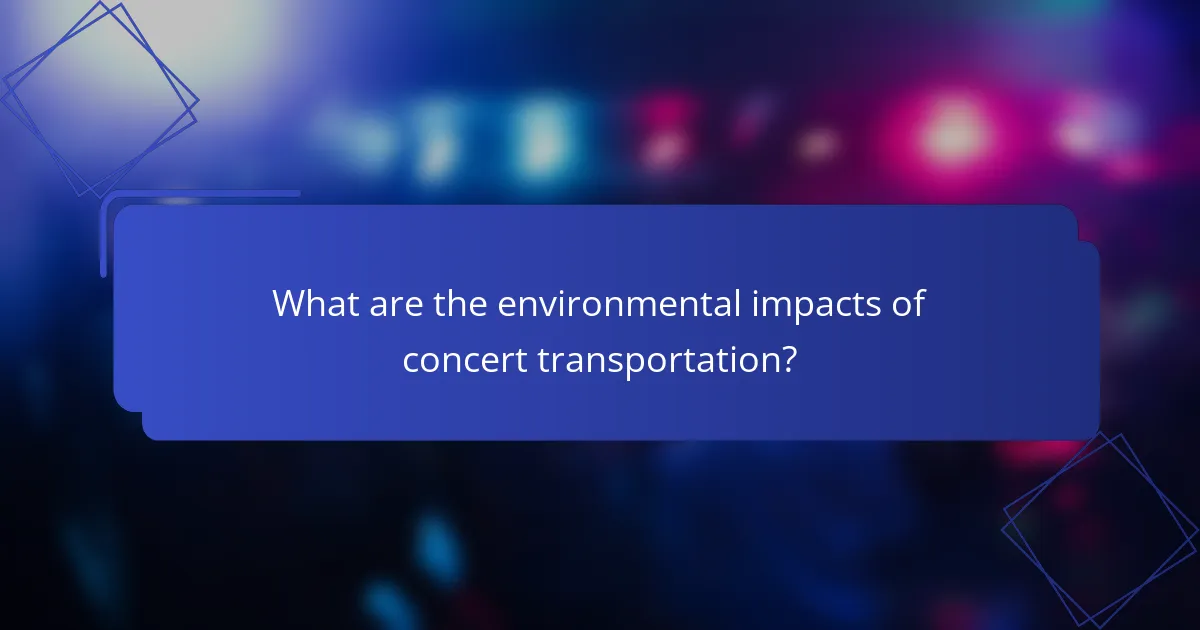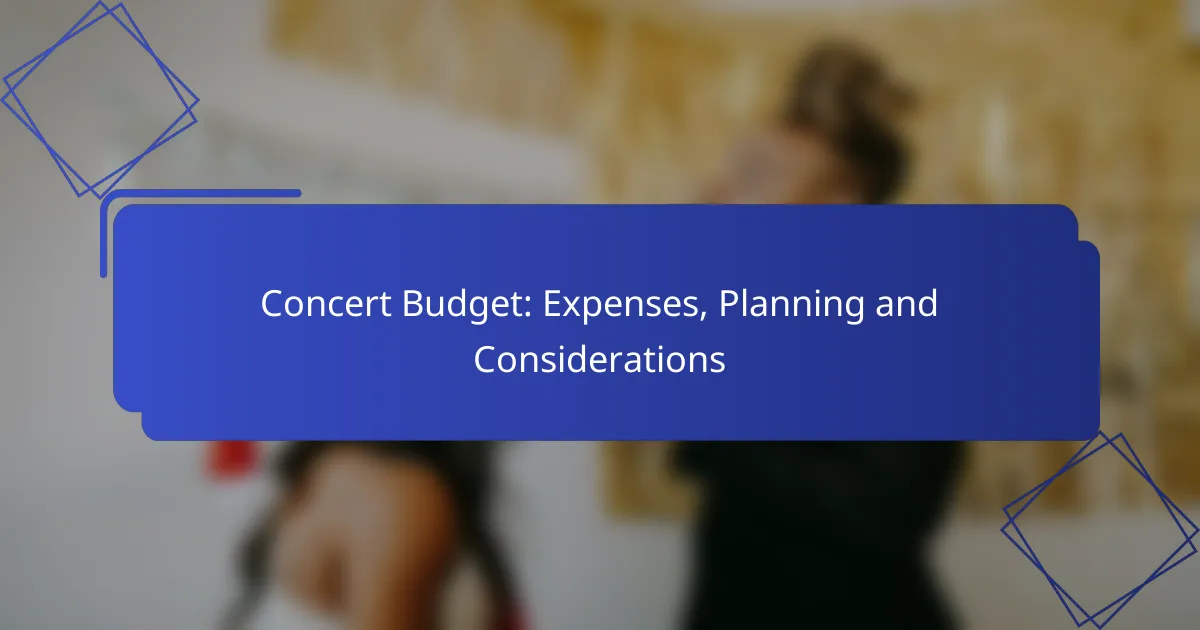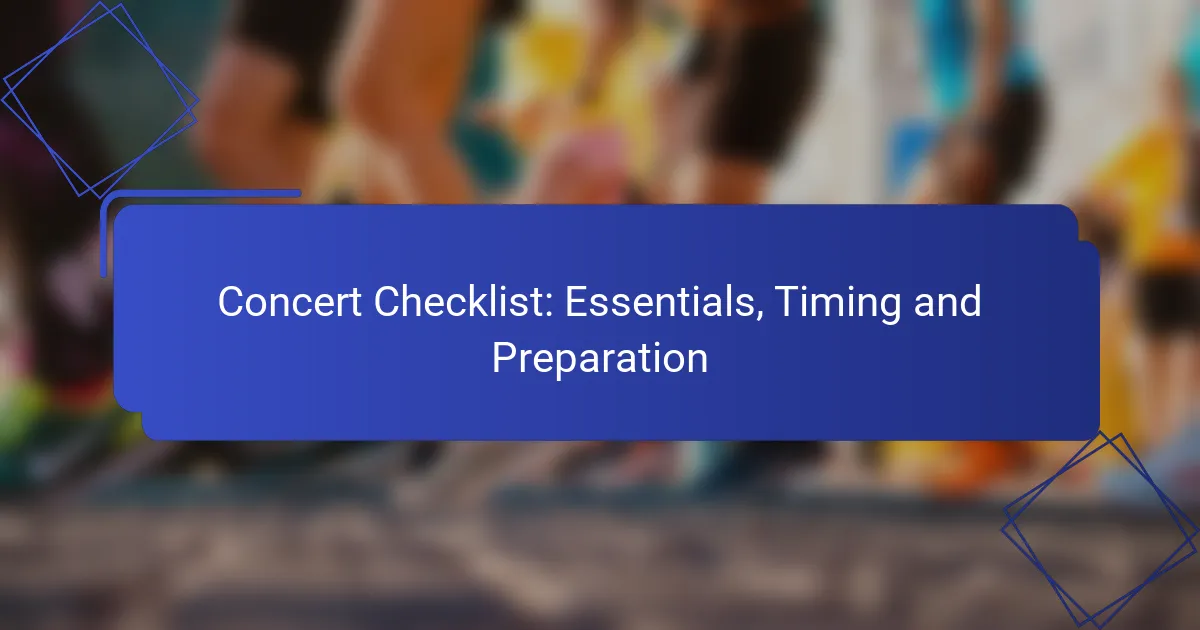When attending local concerts, choosing the right transportation option is crucial for a smooth experience. From public transit and rideshare services to personal vehicles and concert shuttles, each method offers unique benefits and costs that can impact your overall enjoyment. Additionally, being mindful of timing and local traffic patterns can help ensure you arrive on time and ready to enjoy the show.

What are the best transportation options for local concerts?
The best transportation options for local concerts include public transit, rideshare services, personal vehicles, concert shuttles, and bicycle rentals. Each method has its own advantages and considerations, depending on factors like cost, convenience, and distance from the venue.
Public transit systems
Public transit systems, such as buses and trains, offer an economical way to reach concert venues. Many cities have routes that connect directly to popular event locations, often at a fraction of the cost of other options.
When using public transit, check the schedule in advance to ensure timely arrival, especially for late-night events. Some systems may offer special event services, so look for those options to avoid long waits after the concert.
Rideshare services like Uber and Lyft
Rideshare services like Uber and Lyft provide a flexible and convenient way to get to concerts. These platforms allow you to request a ride directly from your location, making them ideal for groups or late-night events.
Keep in mind that surge pricing can significantly increase costs during peak concert times. To save money, consider sharing a ride with friends or using the service during off-peak hours.
Personal vehicle use
Using a personal vehicle to attend concerts offers the freedom to travel on your own schedule. However, parking can be a challenge, especially near popular venues where spaces may be limited or expensive.
Before driving, research parking options and costs in advance. Some venues may have designated lots or partnerships with nearby garages that offer discounted rates for concertgoers.
Concert shuttle services
Concert shuttle services are often provided by venues or local organizations to transport attendees from central locations to the event. These shuttles can be a cost-effective and stress-free way to avoid parking hassles.
Check if the concert you are attending offers a shuttle service, and consider booking in advance if required. This option is particularly useful for larger events where traffic congestion is expected.
Bicycle rentals
Bicycle rentals are an eco-friendly option for reaching local concerts, especially in cities with bike lanes and rental stations. Riding a bike can be a quick way to navigate through traffic and find parking near the venue.
Before opting for this method, ensure that the concert venue has bike racks or secure parking. Additionally, check the weather and plan your route to ensure a safe and enjoyable ride.

How much does transportation to local concerts cost?
The cost of transportation to local concerts can vary significantly based on the mode of travel. Factors such as distance, time of day, and local pricing structures will influence your overall expenses.
Average public transit fare
Public transit fares typically range from a few dollars to around $3-5 per trip, depending on the city and distance traveled. Many urban areas offer discounted day passes that can be economical for concert-goers attending multiple events.
Consider checking local transit websites for specific fare structures and any special concert-related promotions that may be available.
Rideshare pricing estimates
Rideshare services like Uber and Lyft usually charge between $10-30 for a ride to a concert venue, depending on distance and demand. Prices can surge during peak times, such as right before a concert starts.
To save on costs, consider sharing a ride with friends or using rideshare apps during off-peak hours when prices are lower.
Parking fees at venues
Parking fees at concert venues can range from $10-50, influenced by location and event popularity. Some venues offer free parking, while others may charge premium rates for closer spots.
Arriving early can help secure cheaper parking options, and checking venue websites for parking information can provide insights into available facilities and pricing.
Shuttle service costs
Shuttle services to concert venues often charge between $5-15 per person, depending on the distance and service provider. Some venues partner with local shuttles to offer discounted rates for concert attendees.
Look for shuttle options when purchasing concert tickets, as they can provide a convenient and cost-effective way to reach the event without the hassle of parking.

What factors affect transportation timing for concerts?
Transportation timing for concerts can be influenced by several factors, including traffic patterns, public transit schedules, venue location, and the time of day the concert starts. Understanding these elements can help you plan your arrival and avoid delays.
Traffic patterns during events
Traffic patterns can significantly change during concert events, often leading to congestion around the venue. It’s common for roads to be busier one to two hours before the concert starts, as attendees arrive. Consider using traffic apps to check real-time conditions and plan your route accordingly.
Additionally, some venues may implement road closures or detours to manage the influx of concertgoers. Familiarize yourself with these changes ahead of time to avoid unexpected delays.
Public transit schedules
Public transit can be a convenient option for getting to concerts, but schedules may vary, especially on weekends or during special events. Check the local transit authority’s website for updated schedules and any service changes that might affect your travel time.
It’s advisable to allow extra time for potential delays in public transit, particularly if you are relying on connections or transfers. Aim to arrive at the station early to ensure you catch your desired route.
Venue location
The location of the concert venue plays a crucial role in transportation timing. Venues situated in urban areas may have better access to public transit but can also experience heavier traffic. Conversely, rural venues may have less traffic but limited transit options.
Research the venue’s accessibility, including parking availability and nearby public transport stations, to determine the best way to get there. If driving, consider the distance and potential parking fees, which can vary widely.
Time of day for the concert
The time of day a concert starts can greatly affect transportation timing. Evening concerts may coincide with rush hour, leading to increased traffic and longer travel times. Conversely, afternoon shows might have lighter traffic but could still be impacted by local events or road work.
Plan your departure time based on the concert’s start time and the expected traffic conditions. Arriving early not only helps you avoid delays but also allows time for parking and settling in before the show begins.

What are the best practices for planning concert transportation?
Effective planning for concert transportation involves considering traffic conditions, booking rideshares early, and arriving ahead of time for parking. These practices help ensure a smooth experience and minimize delays.
Check traffic reports
Monitoring traffic reports before heading to a concert is crucial for avoiding congestion. Use navigation apps that provide real-time updates and suggest alternate routes if necessary.
Peak traffic times can vary based on the concert’s location and start time, so check reports a few hours before the event. This can save you significant time, especially in urban areas where traffic can be unpredictable.
Book rideshare in advance
Securing a rideshare in advance can help you avoid last-minute hassles and higher costs. Many rideshare services allow you to schedule a ride ahead of time, ensuring you have a driver ready when you need one.
Keep in mind that demand for rideshares can spike during popular concerts, leading to longer wait times and increased fares. Booking early can help you lock in a better price and ensure availability.
Arrive early for parking
Arriving early is essential for securing convenient parking near the venue. Many concert venues have limited parking spaces, and arriving at least an hour before the event can increase your chances of finding a spot.
Consider the venue’s parking policies and fees, which can vary widely. Some venues offer pre-paid parking options, while others may charge hourly rates. Familiarize yourself with these details to avoid surprises on the day of the concert.

What are the environmental impacts of concert transportation?
Transportation to concerts can significantly affect the environment due to greenhouse gas emissions and resource consumption. The choice of transport mode, distance traveled, and the number of attendees all contribute to the overall ecological footprint.
Carbon emissions from different transportation modes
Different modes of transportation produce varying levels of carbon emissions. For instance, traveling by car typically emits more CO2 per passenger compared to buses or trains. On average, a single passenger vehicle can emit around 404 grams of CO2 per mile, while buses can reduce that figure significantly when filled to capacity.
Using public transport or carpooling can drastically lower individual emissions. For example, a full bus can replace dozens of cars, leading to a substantial decrease in overall carbon output. Choosing these options not only benefits the environment but can also be more cost-effective.
Impact of distance on environmental footprint
The distance traveled to a concert plays a crucial role in determining its environmental impact. Longer trips generally result in higher emissions, especially if personal vehicles are used. For instance, a round trip of 100 miles in a standard car can produce several hundred grams of CO2, while shorter distances may have a more manageable impact.
To minimize the ecological footprint, consider attending local concerts or those within a reasonable driving distance. This not only reduces emissions but also supports local artists and venues.
Strategies for reducing environmental impact
To lessen the environmental impact of concert transportation, consider several strategies. Opt for public transportation, which is often more efficient and has a lower per-passenger carbon footprint. Carpooling with friends or fellow concert-goers is another effective way to reduce the number of vehicles on the road.
Additionally, planning ahead can help. Check for local shuttle services offered by venues or event organizers, as these can provide a convenient and eco-friendly option. Always be mindful of your choices and their potential impact on the environment when attending concerts.



